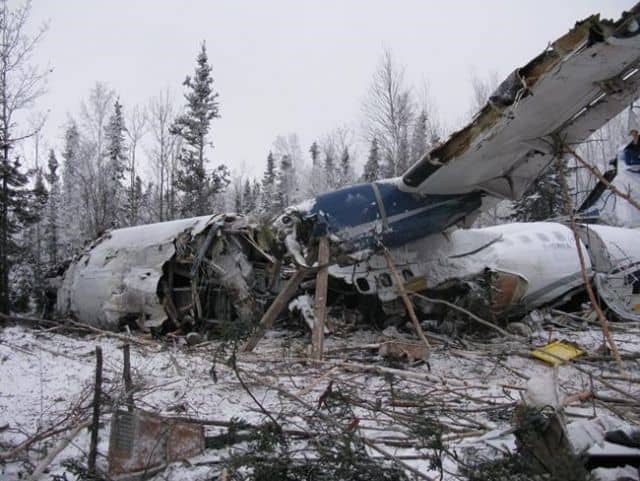
The Transportation Safety Board says people using remote, northern airports are at substantial and unnecessary risk because of a lack of proper equipment for de-icing planes.
The board reached that conclusion during its investigation into the crash of a West Wind Aviation plane just seconds after takeoff from Fond du Lac, Sask., last December.
All 25 people on the plane were injured — nine seriously — and 19-year-old Arson Fern Jr. later died in hospital.
The investigation found that the pilot took off despite noticing ice on the plane during a pre-flight inspection.
There was de-icing equipment at the airport, but board chairwoman Kathy Fox said ladders were not tall enough to reach high surfaces and hand-held spray bottles didn’t have enough capacity to get the job done.
As part of its investigation the board surveyed more than 650 pilots flying to remote airports. Nearly 40 per cent reported rarely or never being able to have their planes de-iced.
“The data from the questionnaire is clear: This issue is widespread, recurrent and it leaves passengers and crews exposed to unnecessary risks,” Fox said Friday.
“Give people the tools they need to do their job: better sprayers, equipment to get to high surfaces — lifts and booms for example — for de-icing and for anti-icing.
“As pilots across the country have told us, you can’t use what you don’t have.”
Federal Transport Minister Marc Garneau said he has ordered his department to act.
“I have instructed the department to look at the de-icing situation on an urgent basis,” he said in a statement.
As well as proper equipment, Fox said, more needs to be done to ensure pilots aren’t taking off with ice on their planes.
“It’s partly human nature,” she said. “Do something slightly risky once without anything bad happening and you are more likely to do it a second time, not because you are unaware of the risk, but because you have personally yet to experience any negative consequences.
“Reversing this will require urgent action from Transport Canada and air operators.”


